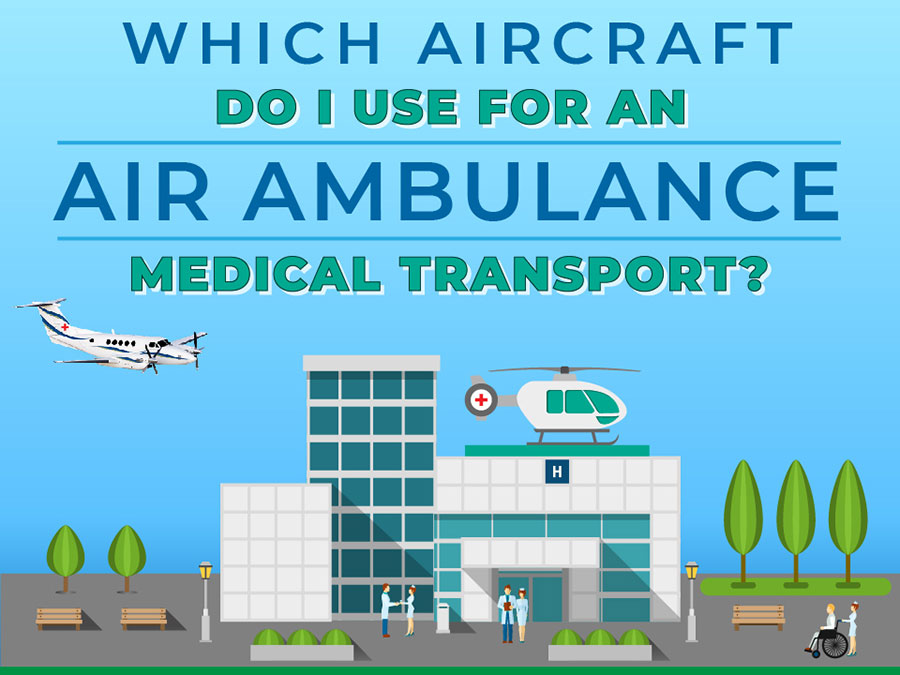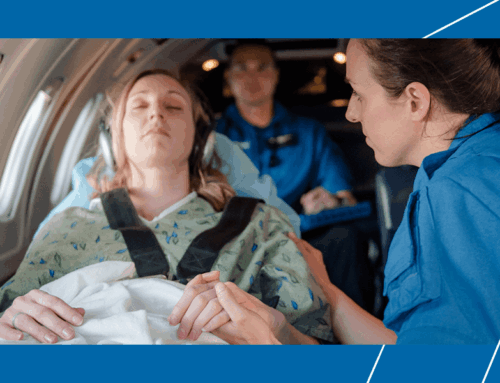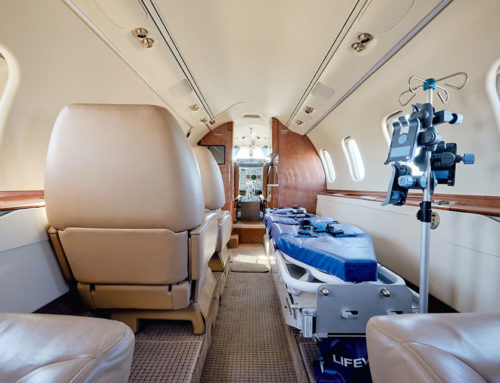Your medical situation and transport needs will help determine which aircraft you want. Factors include urgency, distance, level of comfort, and degree of medical care.
There are 2 types of Air Ambulance aircraft used for medical transports, Rotary-Wing (Helicopter) and Fixed-wing (airplane).
Here are the differences between the two types of aircraft:
- Drop-off location: Rotary-wing aircraft can drop patients off directly at a hospital while fixed-wing aircraft drop off the patients at the airport with ground ambulance transporting taking them to the hospital.
- Patient type: Rotary-wing aircraft can transport patients who are emergent, trauma patients, and critically ill patients. Fixed-wing aircraft can transport emergent and critically ill patients, as well as non-emergent patients.
- Distance of transport: Rotary-wing aircraft are used for short distances under, typically under 350 miles but often closer. Fixed-wing aircraft are used for long-range distances over 350 miles up to 2700 miles with the use of some aircraft.
- Ownership: Rotary-wing aircraft are often owned by hospitals and city/county EMS groups. Fixed-wing aircraft companies are usually privately owned.
- Cost: Rotary-wing and fixed-wing transports are all costly, with rotary-wing transports slightly more expensive.
Examples of Aircraft Types:
• Rotor Wing: Bell 407
• Propeller Aircraft (Piston Engine): Cessna 414
• Propeller Aircraft (TurboProp Engine): King Air 200
• Jet Aircraft (Turbofan Engine): Learjet 60
Air Ambulance Aircraft Usages:
Distance:
- Helicopter: 100-350 miles
- Cessna 414: 350-1250 miles
- King Air 200: 350-1580 miles
- Learjet 60: 350-2700 miles
Altitude:
- Learjet 60: 43,000 feet (above adverse weather)
- King Air 200: 30,000 feet (through cumulonimbus adverse weather)
- Cessna 414: 25,000 feet (through cumulonimbus adverse weather)
- Helicopter: 10,000 feet (under and in all adverse weather)
Speed:
- Helicopter: 160 mph
- Cessna 414: 250 mph
- King Air 200: 310 mph
- Learjet 60: 550 mph
Max Flying Time:
- Helicopter: 2.2 hours
- Cessna 414: 2.5 hours
- King Air 200: 3.5 hours
- Learjet 60: 5 hours
In 2 hours, each aircraft could fly:
- Helicopter could fly up to 320 miles
- Cessna 414 could fly up to 500 miles
- King Air 200 could fly up to 620 miles
- Learjet 60 could fly up to 1100 miles
Crew Capacity:
- Helicopter: 1 pilot, 2 medical crew, 1 patient
- Cessna 414: 1 pilot, 1 family member (sits beside pilot), 2 medical crew, 1 patient
- King Air 200: 1 pilot, 2 medical crew, 2 patients, 1 family member
- Learjet 60: 2 pilots, 2 medical crew (space for 3 more), 1 patient, 1-2 family members
Pros and Cons of each aircraft transport:
- Helicopter:
- Pros: Can land almost anywhere. Delivers patients directly to a medical facility.
- Cons: Susceptible to weather conditions. Not a long-distance option. High emergent costs.
- Cessna 414:
- Pros: Short-range flights. Can operate from short runways. Cost-effective.
- Cons: Need to utilize ground transportation to bring patients to aircraft. Low altitudes are uncomfortable for the patient. Weight sensitivity causes unreliable passenger count.
- King Air 200:
- Pros: Rugged but dependable performance. Can transport more than one patient.
- Cons: Need to utilize ground transportation to bring patients to aircraft. Slow for long-distance transports. Low altitudes are uncomfortable for the patient.
- Learjet 60:
- Pros: Longest and fastest flight option. Pilots have control of the cabin environment and altitude range to provide ultimate comfort.
- Cons: Need to utilize ground transportation to bring patients to aircraft. Requires the most runway space for takeoff and landing out of other aircraft.





